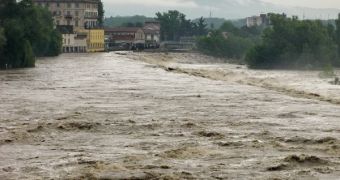The major coal ash spill that occurred in eastern Tennessee on Monday covered an area of approximately 400 acres in debris from a retention lake near the Kingston Fossil Plant. The Tennessee Valley Authority, the largest utility company in the United States, assured the locals that the water was safe to drink, despite the fact that approximately one billion gallons of coal fly ash – a byproduct of burning coal – spilled into nearby rivers and polluted them severely.
Tom Kilgore, the leader of TVA, said on Sunday that the company would pay for testing the quality of water in wells around the spill site, so as to reassure some 2-300 affected residents that the spill posed no immediate danger to their health. An entire neighborhood in Harriman was flooded, and the debris made its way into the Emory River, which prompted concerns for people living in nearby Kingston.
Although it exhibits a PR-friendly facade, TVA also refuses to let independent observers take pictures and water samples from the affected area. Two photographers who tried to capture the site on film were detained by TVA police and held in custody for about an hour before being released. The two, members of the Knoxville-based United Mountain Defense, said that they wanted to take water samples of their own, to have it independently tested.
“This is an issue of national importance. People need to know if the water is safe or not,” said David Cooper, one of the photographers.
The illegal detention was widely criticized by civil rights groups, which said that the very core of American freedom was infringed upon by the actions of TVA police. They argued that people had a right to know the scale of the disaster, and also to see for themselves the devastation. There are currently no laws in place to prevent people from taking water samples out of national rivers or creeks, they added.
The danger now is that the ash spill will dry out, which would mean that a cloud of ash, similar to the one released by a volcano, will roam the region and deposit itself on everything it comes across. Emergency response teams are currently working to clear the area of potentially hazardous remains.

 14 DAY TRIAL //
14 DAY TRIAL //